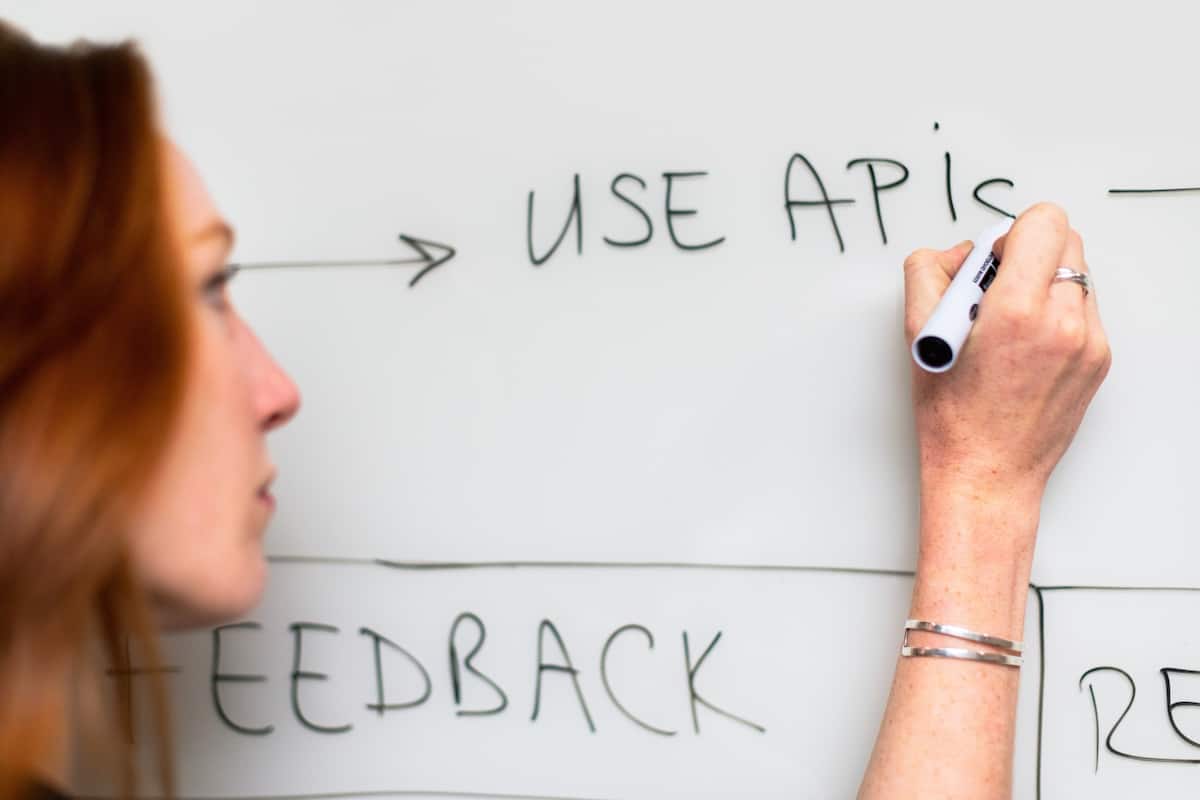
If you were to ask me the primary areas that Human Resources teams get into legal trouble, recruiting assessments would be in second position. (FLSA misclassification would be in the top spot, but that is another article for another day).
Hiring top talent is not only extremely competitive but critical to an organization’s success. Utilizing pre-employment tests as one part of your recruitment practice can help with efficient and effective hiring. However, if done improperly (and in my experience, 90% of recruiting leaders handle hiring assessments improperly) they can hinder your candidate experience and cause you major legal headaches.
To help you navigate these assessment waters, I’ve teamed up with Organizational Psychologist, Lauren Catenacci, Ph.D. Below, we will share best practices for utilizing recruiting assessments, as well as highlight pitfalls to avoid.

(CYA caveat: this article is intended as an overview of recruiting assessment best practices and is not formal legal advice; neither Lauren nor I are employment attorneys. In designing your pre-employment testing practices, we strongly encourage you to work with a subject matter expert – I personally recommend Lauren! – and review company policies with your employment attorney).
Best Practice #1: Establish Your Why
For what purpose are you using recruiting assessments? Are you trying to pare down a large number of applicants? Are you aiming to improve retention or team performance?
Using pre-employment tests is a hefty undertaking; be clear on your why before embarking on this project. A clear purpose will help you select the right assessments for the right reasons. A few legit reasons to use hiring assessments include:
- Narrowing down a large volume of candidates for certain roles
- Hiring senior leadership roles
- Evaluating a \ specific, measurable skill (e.g., HTML coding) critical to a role
- Verifying information gleaned from interviews and references about a candidate’s soft skills
Best Practice #2: Clearly Define Job Requirements
The foundation of a successful recruitment process, whether you utilize recruiting assessments or not, lies in precisely defining job requirements. This begins with creating comprehensive job descriptions that provide a clear overview of the position. At Talent Alchemists, job descriptions are called job scorecards, as they contain in-depth metrics and details. You can review a sample job scorecard here.
By outlining key responsibilities, required skills, metrics, qualifications, and competencies, you set the stage for an effective hiring process, that includes the use of assessments, that aligns with your organizational needs.
Best Practice #3: Select Job-related Assessments
Once you have clearly defined job responsibilities, you can now select assessments that correspond to those duties. These may include cognitive ability tests, personality assessments, and work sample tests, among others. Choosing assessments based on specific job criteria ensures you are gathering relevant and meaningful data about the candidates based on real-work scenarios.
Lauren shares, “Pre-employment assessment should consider the role in question and what research tells us about the behaviors associated with performance. For example, I partnered with an organization that believed a higher IQ was associated with better performance in their sales role. To verify this claim, they utilized the Wonderlic to confirm IQ did predict success in this particular role.” With this knowledge, the company could confidently add the Wonderlic to their arsenal of hiring tools for the sales position.
As well, job-related assessments help ensure fairness and objectivity in the hiring process. Tests tied strictly to job requirements eliminate bias and discrimination in the evaluation process. Establishing this fairness, though, is based on the underlying assumption that the tests utilized are valid and reliable. More on that below…

Select Valid & Reliable Tests
A “valid” test ensures that the assessment measures what it intends to measure. For example, if you are determining a candidate’s proficiency with Excel, the assessment needs to clearly measure Excel abilities as opposed to, say, typing abilities. Often this is referred to as “predictive validity.”
A “reliable” test ensures consistency of the results. Using our Excel example, candidates with strong Excel skills will consistently score high on the assessment, and external factors, like age, gender, ethnicity, testing location, and native language, will not differentially impact the test result.
Let’s talk for a moment about a widely-used (perhaps I should say widely-misused) personality test – the MBTI (Myers-Briggs Type Indicator). Lauren points out that research shows the MBTI is not a reliable measure of personality. When people took the test multiple times in different situations (e.g., at work vs. at home) their profile (e.g., INTJ, ENFP, etc.) would change. “That suggests the assessment is not consistently measuring the same thing. Validity is about accuracy. In other words, is your assessment actually measuring personality or perhaps is it measuring something else,” Lauren continues.
Having studied the MBTI in great depth for my Master’s coursework, I am a huge fan of the tool for team building and understanding communication styles. I would never recommend this tool for pre-employment testing. Basically, Lauren and I are saying, there is really a best practice #3.5: do not use the MBTI for employment decisions.
In a nutshell, to maximize the effectiveness of your assessments, use scientifically studied tools that have undergone rigorous testing for predictive validity and reliability.
Select a Combination of Assessments
No assessment is perfect; errors are inherent in any tool you use. To minimize those errors and to get a holistic view of candidates, use a combination of tests. Evaluating different aspects such as cognitive abilities, personality traits, and work-related skills provides a comprehensive view of a candidate’s suitability for the role. As Lauren states, “It is impossible for any assessment to fully predict success in a role. Use a combination of validated assessments to get a more accurate prediction and help to minimize error.”
Best Practice #4: Create Transparent Policies
Establishing clear, transparent policies and procedures for the use of employment tests are essential for a fair and consistent evaluation process. Develop a written policy that outlines how assessments will be used, including the method and timing of assessments, who has access to assessment results, how these results influence hiring decisions, and how reasonable accommodations will be handled. By following a well-defined process, you promote objectivity and accountability.
Minimize Unconscious Bias
Humans are naturally biased creatures; we can’t help it. Being aware of our bias and working to minimize impacts on hiring is key to maintaining fairness and equity. A key step to eliminating bias from decision-making is to write clear policies and practices for the use of hiring tests. Following these standards ensures no candidate is treated differently.
I always recommend developing a repeatable process where every candidate goes through the exact same process.
Lauren Catenacci, Ph.D, Organizational Psychologist
Another practice to minimize bias is collecting assessment scores from current employees. Per Lauren, if you are using a rigorously validated test from a vendor, assessing baseline data from current team members isn’t necessary, but is good practice.” This data allows you to see the relevancy of scores for your team and allows for deeper analysis of the tool when looking at your high and low performers.
Baseline data from employees also builds the foundation for using a cutoff score in the hiring process. Not many HR teams use cutoff scores for fear of legal repercussions and loss of flexibility in hiring decisions. However, a validated cutoff score can reduce bias and legal concerns.
While flexibility in hiring decisions sounds optimal, this is often where unconscious bias and unfair practices hide. There is a thin line between flexibility to make the right decision and creating wiggle room in order to hire your best friend’s son.
Nancy Stewart, Talent Alchemist
As a PeopleOps practitioner, I am a big fan of cutoff scores, that have been normalized with current team members, for certain tests like typing speed, Excel mastery, and coding knowledge. When setting cutoff scores, it is a good idea to get help from an expert like Lauren, so you know you are establishing a valid procedure.
Lastly, your policy should clearly state how assessment scores will be weighted and utilized in the hiring process. Never make a game-time decision on how an assessment will impact a candidate already in the interview process. That is a recipe for legal disaster.

Best Practice #5: Communicate Process With Candidates
Transparent communication with candidates about the assessment process is essential to set expectations and create a positive experience. Inform candidates about the purpose of assessments, how they will be evaluated, and the significance of their outcomes. Encourage candidates to ask questions and provide them with any necessary support or clarification they may need throughout the process.
Best Practice #6: Evaluate and Adjust Assessment Practices
Continuous improvement is important to optimizing your assessment practices. Regularly evaluate the effectiveness of your assessments by reviewing their impact on hiring decisions and organizational outcomes. Long-term studies should be in place to monitor the accuracy of your assessments in predicting performance, retention, and culture fit.
Lauren encourages you to ask, “Is this assessment actually working and meeting its purpose [See best practice #1.] Are new hires performing at a high level? Are they still with the organization at 3 months, 6 months, 1 year?” Answers to these questions may indicate you need to adjust the use of your pre-employment tests.
As well, feedback from hiring managers, candidates, and recruiters may point to areas for improvement. Are hiring managers satisfied with the services of the recruiting team? Do recruiters feel like good candidates are getting overlooked?
Additionally, stay updated with industry best practices and laws (many more will be coming about regarding the use of AI and assessment in employment practices).
Summary
Pre-employment assessments are powerful tools that can significantly enhance your hiring process. By following the best practices outlined in this blog post, you can ensure that your assessments are effective, fair, and aligned with your organizational goals. Remember, the goal is not only to find qualified candidates but also to identify those who will thrive in your unique work environment. With the right approach and a commitment to continuous improvement, you can unlock the potential of recruiting assessments to build a talented and high-performing workforce.
Here is a quick recap of key takeaways for your assessment practices:
- Use assessments that have been validated.
- Follow clear policies that create a repeatable process for EVERY candidate and establish the “rules” well in advance of a hiring decision.
- Utilize other tools in the hiring process (e.g., interviews, references, resume reviews). Assessments are only one piece of the puzzle.
- Continually monitor the effectiveness of the assessments.
Chime in with comments and questions below. Or, reach out to Lauren or me if you have questions about the next steps in establishing your hiring practices.





